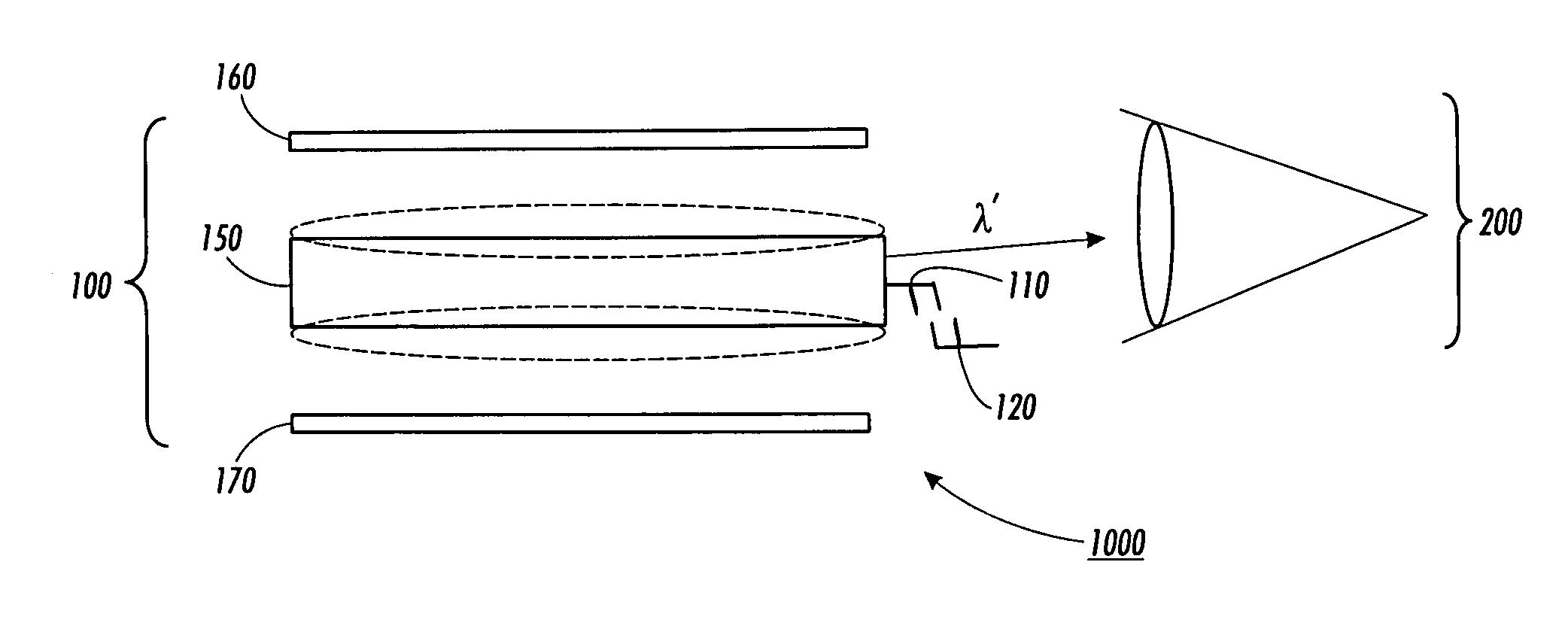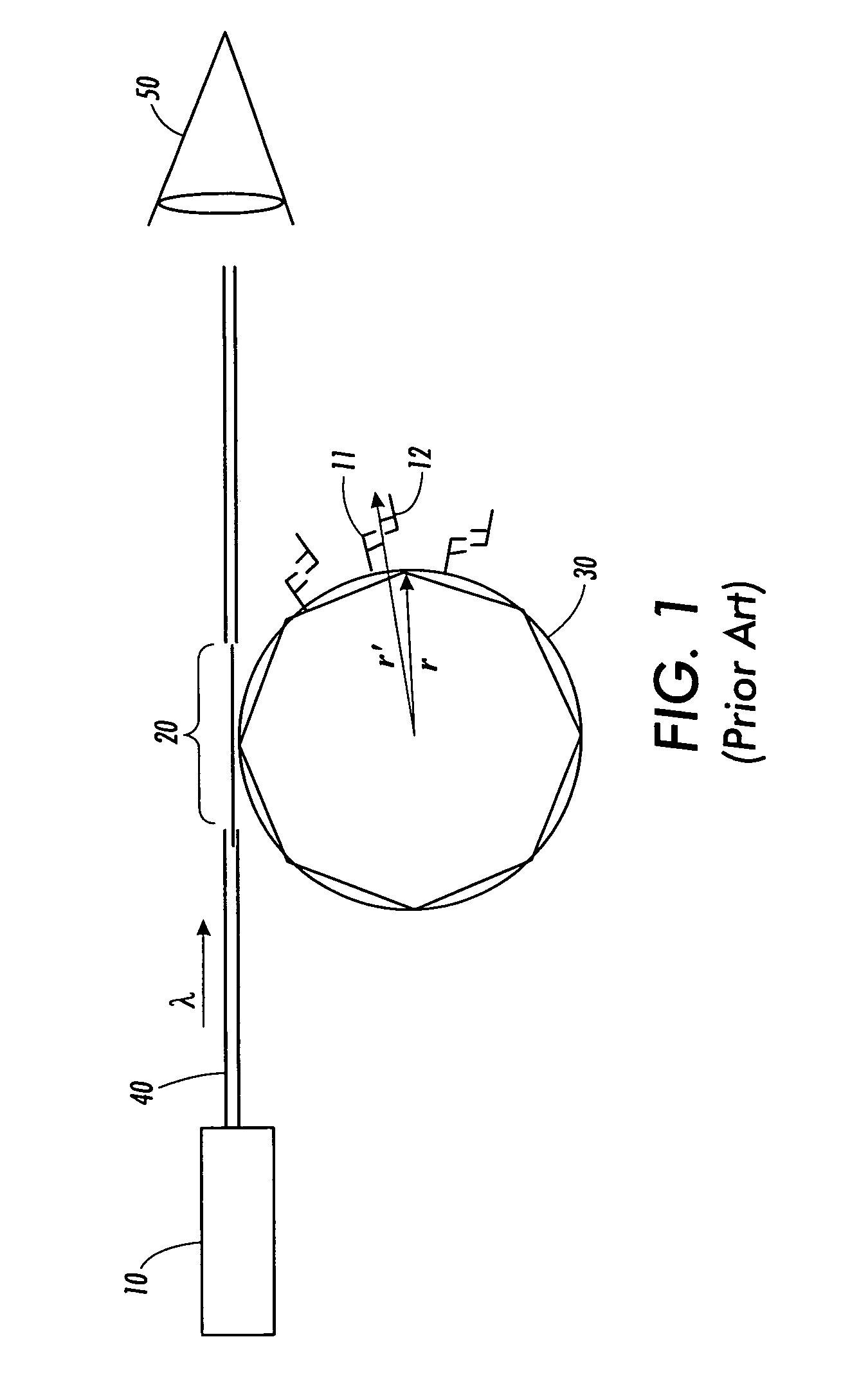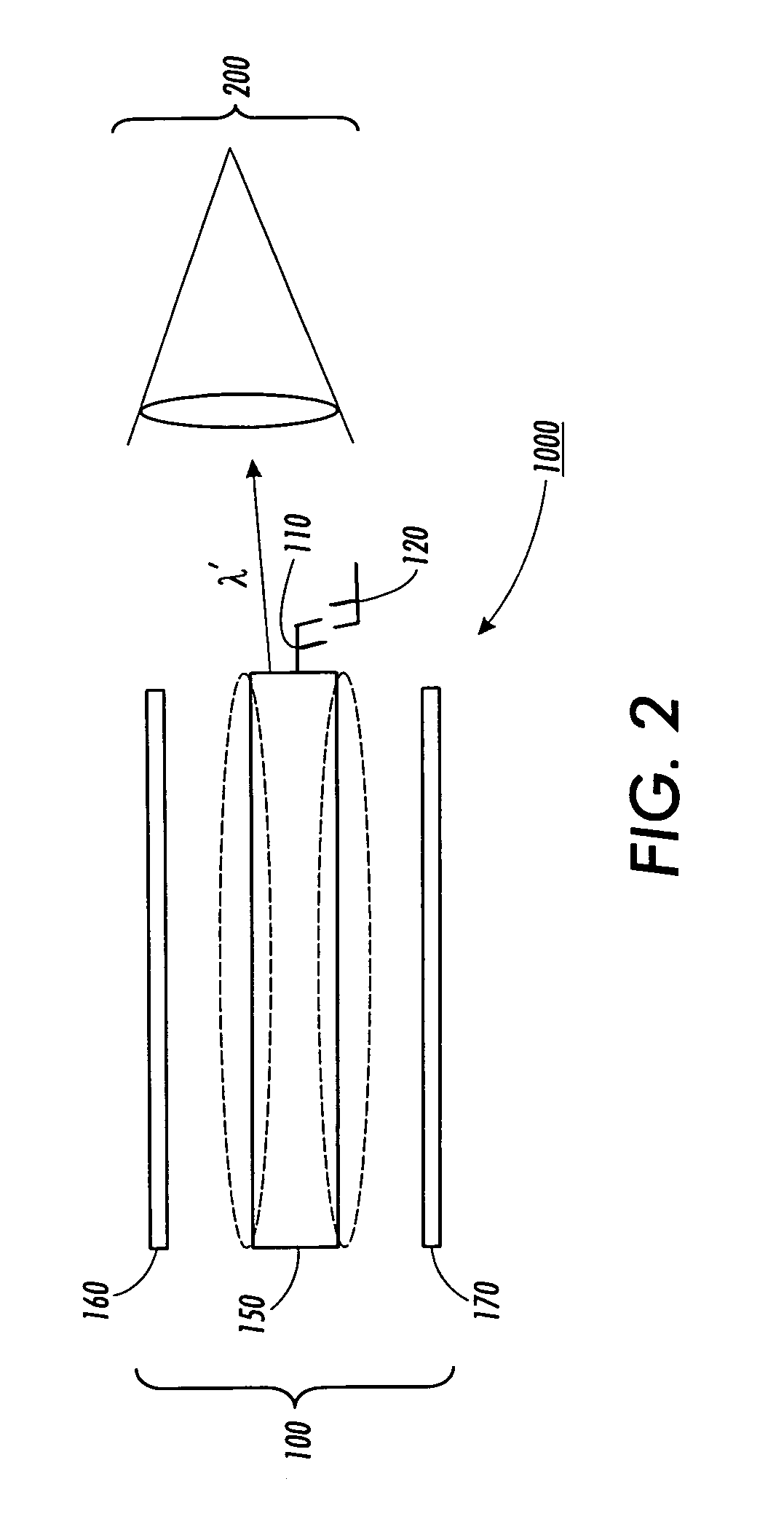Biosensor using microdisk laser
a micro-disk laser and biosensor technology, applied in the field of compact sensors, can solve the problems of lack of specificity or sensitivity, poor ease-of-use, or reliability, and each of the previous approaches in the prior art suffer from one or more slow speeds, etc., and achieve the effect of high parallel configuration and high automation
- Summary
- Abstract
- Description
- Claims
- Application Information
AI Technical Summary
Benefits of technology
Problems solved by technology
Method used
Image
Examples
Embodiment Construction
[0033]According to the present invention, a current-injected or optically pumped, planar microdisk laser is used to generate narrow bandwidth radiation, having a wavelength which depends critically on the diameter of the microdisk. Because of the dependence of the wavelength on the diameter of the disk, shifts in the output wavelength can indicate the presence of additional layers adsorbed to the sidewall surface of the microdisk, effectively increasing its diameter. To make a sensor using a microdisk laser, sidewall surfaces of the microdisk laser may be coated with a biological or chemical recognition element, that is, an element which preferentially binds to the nucleic acids, proteins, organelles, functional groups or other constituents of the target analyte. After coating the microdisk laser with the recognition element, the wavelength of the microdisk laser is measured. The wavelength will have shifted slightly from the nominal output wavelength, because of the presence of the...
PUM
| Property | Measurement | Unit |
|---|---|---|
| wavelength shift | aaaaa | aaaaa |
| wavelength shift | aaaaa | aaaaa |
| wavelength shift | aaaaa | aaaaa |
Abstract
Description
Claims
Application Information
 Login to View More
Login to View More - R&D
- Intellectual Property
- Life Sciences
- Materials
- Tech Scout
- Unparalleled Data Quality
- Higher Quality Content
- 60% Fewer Hallucinations
Browse by: Latest US Patents, China's latest patents, Technical Efficacy Thesaurus, Application Domain, Technology Topic, Popular Technical Reports.
© 2025 PatSnap. All rights reserved.Legal|Privacy policy|Modern Slavery Act Transparency Statement|Sitemap|About US| Contact US: help@patsnap.com



